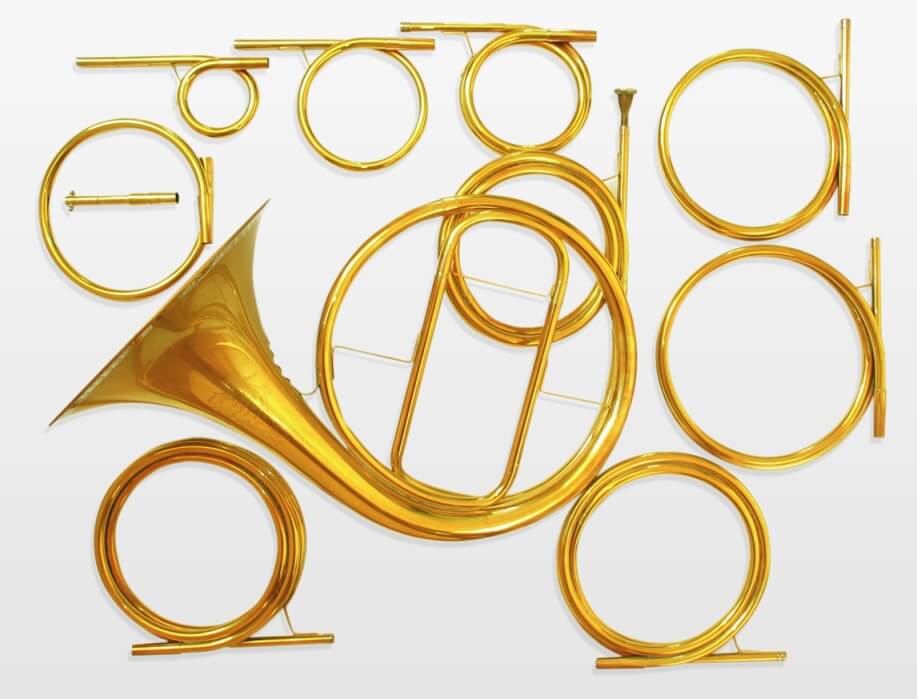Some of the most common questions I get from students and parents are about the differences between different types of French horns:
What is the big difference between a single and double horn?
What are the various positives and negatives of each horn type, and which is better?
What is a triple horn, and do I need one?
What is a descant horn (and why are there single and double descant horns)?
This page aims to take away some of the mystery from these questions.
If you’re looking for information and brand recommendations, my Buying a Horn page has lots of brand and model recommendations for all sorts of horns and playing levels.
- What is a Single French Horn
- What is a Double French Horn
- What is a Triple French Horn
- What is a Natural French Horn
- What is a Marching French Horn/Mellophone
What Is A Single French Horn?
A single horn is a French horn that has only one valve slide per rotor. They come in a variety of different keys, but they all share this characteristic.


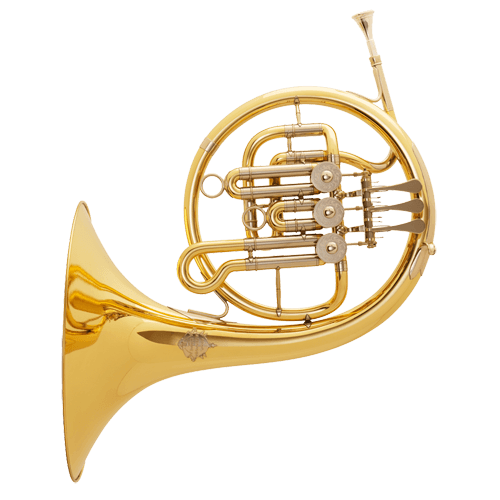
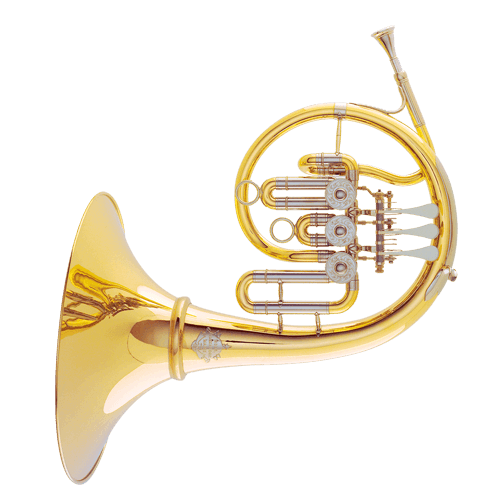
By far the most common type of single horn is a single F horn, that is generally used exclusively by beginning French horn players, but other types of single horns do exist.
Probably the most confusing type of single horn encountered is the single Bb horn. Like the single F horn, these only have one slide per rotor, but they are pitched in the key of Bb (one octave below a trumpet) instead of F. These are often confused with double horns, due to the 4th valve (which is generally a stopping valve or F-extension). Make no mistake about it, though, these are single horns.
Single Bb horns are very lightweight and great in certain musical situations, but in general, they are not recommended for beginning horn players. Stick to a single F horn or standard double horn for beginning horn players.
Vienna horns are another type of single horn since they only have one slide per valve. Vienna horns don’t use regular rotors like most French horns, instead, they use special ‘pumpen valves’. These valves contribute to the Vienna horns exceptionally smooth slurs.
While Vienna horns are mostly played in the key if F, they do use a long loop of tubing (called a crook) between the mouthpiece and the body of the horn. This long loop can be replaced by a much smaller loop or a straight tube to put the horn in the key of Bb or A to play especially high parts.
Even more rarely seen than single Bb horns are single F-alto descant horns. These are a type of descant horn since they are pitched a fifth higher than the Bb single horn (one octave higher than a normal single F horn, and the same length as a mellophone). These are definitely professional-level instruments since the shorter length horn requires a different technique and very careful right-hand placement to have a characteristic horn sound. These are different than a mellophone, as I explain below!
Sometimes you’ll see small Bb soprano horns for sale on sites like Amazon or Ebay. While these are also single horns, generally they are poorly made and not really worth much. They are the same pitch as a trumpet, usually, don’t require the hand to be in the bell (since the bell is the same size as a trumpet) and often don’t even work with a horn mouthpiece. Unless you’re looking for a novelty item, stay away from these horns.
What Is A Double French Horn?
A double horn is a horn that has two different valve slides per rotor. They come in a few different keys, but all of them share this in common.
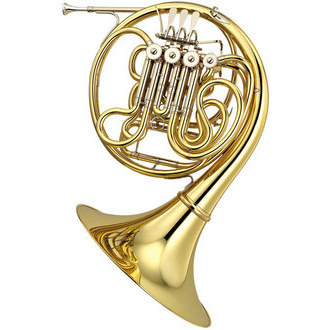
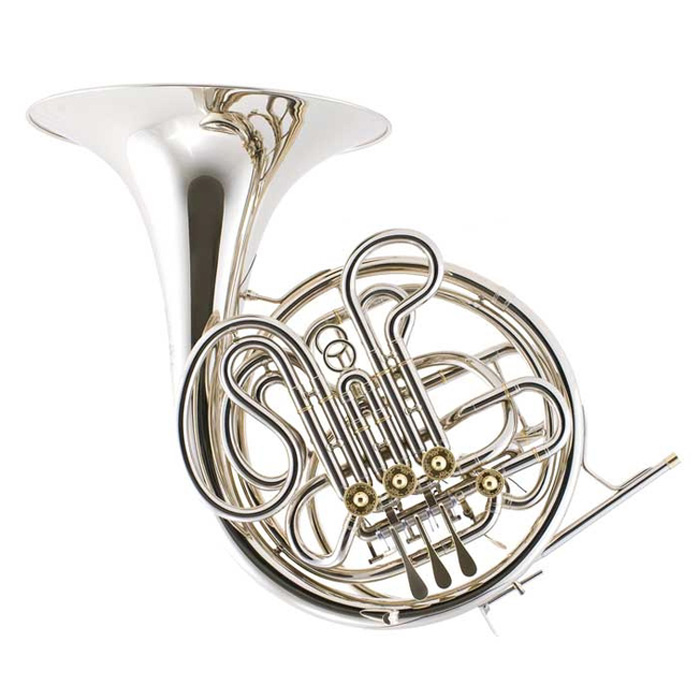
The most common double horn in use today is the F/Bb double horn. This horn essentially combines the F single horn with the Bb single horn. So each of the three main rotors (the rotors activated by the index, middle, and ring fingers), will have two valve slides (one for the F horn, one for the Bb). There will also be a trigger activated by the thumb, but that rotor may or may not have a slide connected to it.
This is double descant horn. While it is a double horn (since it has two valve slides per rotor), it is not pitched in the usual key of F and Bb, instead, it is pitched in higher keys. The “standard” keys for a double descant horn are Bb (the same as the single horn) and F-alto (like the single F-alto horn), but there are Bb/Eb-alto descant horns, low F/F-alto, and even Bb/Bb-soprano descant horns in existence.
Often descant horns will feature more valves than a standard double horn since they usually incorporate a fifth valve as a stopping valve/low-F extension. Some double descants feature two separate valves for these functions, and so they will have six valves in total.
Like single F-alto horns, though, descant horns are generally only used by professionals, and often only on relatively high or exhausting musical works.
What is A Triple French Horn?



As you can probably predict, a triple horn is a horn with three ranks of valve slides per rotor. These are complex and often heavy instruments, but in theory, offer the best of all three types of horns.
The standard triple horn features horns in the keys of low F, Bb, and F-alto. There are a few different makers of triple horns that use the key of Eb for the highest horn since it’s a bit longer than the F-alto horn and so it makes it easier to match the sound, intonation and playing characteristics between the three horns. There are a couple of models of triple that use high Bb (the same as a trumpet) for the highest horn, but these are only used for the highest horn parts in the literature.
While triple horns are thought of as the best of the best of all possible horn styles, remember that the way a horn plays and sounds is primarily the result of the tapered sections of tubing. While a single horn can optimize its tapers for a relatively narrow range of keys, double horns and triple horns must have tapers that work over a much wider range if tube lengths. Often times this leaves one or two sides of the triple horn merely adequate while the other side(s) are exceptional.
What is a Natural French Horn?
The natural horn doesn’t really fit into any of the above categories since it has no valves. Instead, it uses different length tuning slides or a length of tubing (called a crook) that is inserted into the front of the horn (where the mouthpiece goes) to change the key of the horn.
These horns play only the notes of the harmonic series, although the pitch can be altered somewhat by means of the lips (for low register notes) and the right hand (for middle and upper register notes).
What is a Marching French Horn/Mellophone?
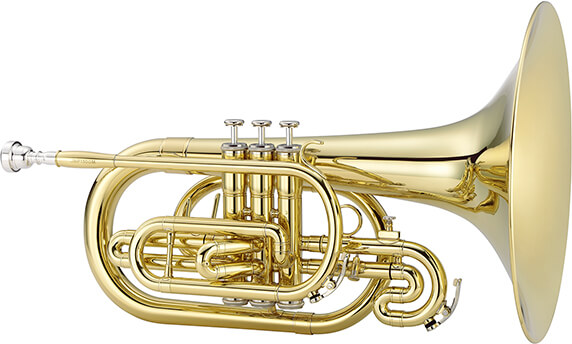

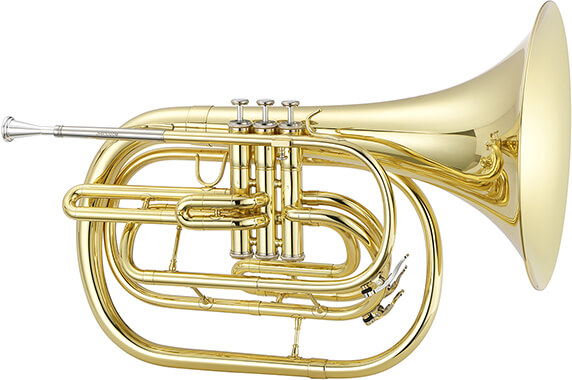
There’s quite a lot of confusion about the middle-voice brass instrument used in marching band. Terms like “mellophone” and “marching horn” are often used interchangeably, although they are not the same instrument.
Check out my mellophone guide if you’re just getting started on this instrument!
The instrument referred to as the mellophone today is perhaps more accurately called a marching mellophone. It is shaped (and held) like a trumpet, and the player uses his right hand to control the three piston valves. It is pitched in F alto and uses the same fingering pattern as a trumpet (although the music is written in F). The marching mellophone uses either a deep trumpet mouthpiece or a tenor horn mouthpiece, although there are a few makers of specialty mellophone mouthpieces from Drum and Bugle Corps. There are adapters that allow horn players to use a regular French horn mouthpiece on the mellophone, and while this eases the switch from marching to concert instruments, it can make the intonation on the instrument less predictable.
The other type of mellophone is an instrument that is rarely seen today. It is still in F (or sometimes Eb) alto, and it’s shaped like a horn, but backward. This mellophone also has piston valves that are played with the right hand, and although the bell points to the player’s left rear, the hand is not placed in the bell. These instruments also use a trumpet or tenor horn mouthpiece and are almost never seen in use.
The marching French horn is similar in appearance to the marching mellophone but has several important differences (and, in my opinion, advantages). These instruments are keyed in Bb – the same pitch and octave as the Bb side of a double horn, and take standard French horn mouthpieces without any adapters or funky intonation tendencies. Even though they are pitched in Bb, these horns should still read off regular F horn parts, just using all Bb (or trigger) fingerings. This has the advantage of teaching the student all their Bb horn fingerings! These instruments aren’t quite as easy to play as loud as a mellophone, but they do have (in my opinion), a much nicer horn-like sound. Plus, having the bell pointed to the front helps a lot for the typical horn player!
Conclusion
I hope that this page has been useful. If you have any questions or need help identifying a specific type of instrument, please don’t hesitate to post a comment below.
If you’re in the market to buy a horn, I have a page covering lots if different horn makers and models. You can find that on my Buying a Horn page.

